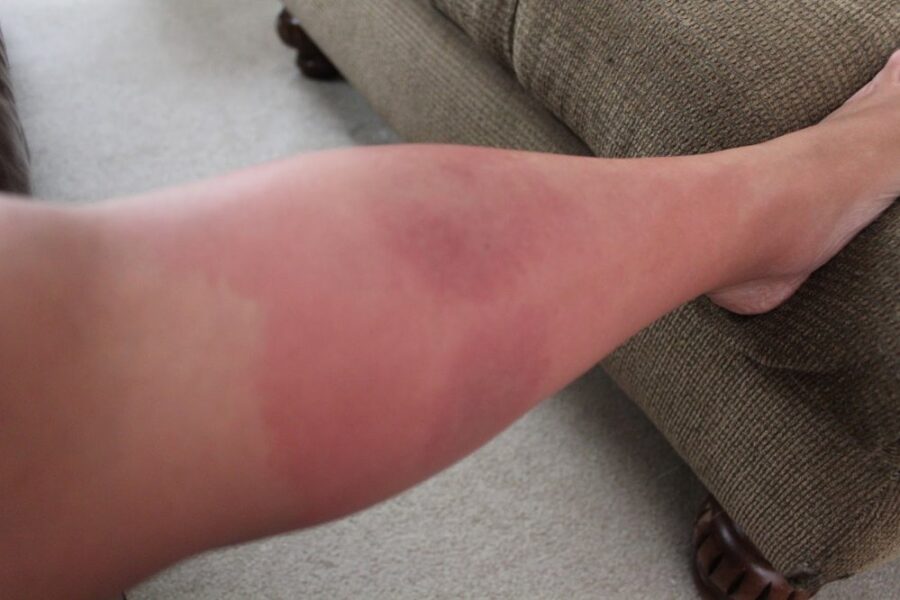Current guidelines for management of Skin/Soft Tissue Infections (SSTIs) were published in 20141. Nevertheless, management of SSTIs is variable, likely driven by the fact that culture data is often unavailable to direct clinical decision making. Treatment variability results in inappropriate antimicrobial use, highlighting the need for antimicrobial stewardship. Consequently, management of SSTIs is one area where more research has identified easy targets for improvement. This review describes two such studies.
The first, a systematic review conducted by Bowen et al.2, sought to answer the question: For which SSTIs should we use sulfamethoxazole-trimethoprim (SXT)? After identifying 196 potential studies, 10 randomized controlled trials (RCTs) and 5 observational studies underwent full-text review. The largest RCT of impetigo with 90% of isolates cultured as group A streptococci (GAS), found a nonsignificant difference in treatment success with 3-5 days of SXT vs benzathine penicillin. The authors therefore recommended a short course of SXT as treatment of choice for impetigo (when clinical situation dictates systemic therapy). The 2014 SSTI guidelines recommend covering S. aureus in impetigo, but only recommended it for situations where MRSA is suspected or confirmed. The systematic review also highlighted newer RCTs demonstrating high grade evidence in favor of adding SXT to incision and drainage for abscesses vs incision and drainage alone. The authors concluded that there was high grade evidence to support use of SXT monotherapy for SSTIs caused by GAS and S. aureus, including impetigo, purulent SSTIs and abscess (coupled with incision and drainage), and agreed that beta-lactams are treatment of choice for nonpurulent cellulitis, as MRSA coverage provides no additional benefit.
The second study conducted by Kamath et al.3, discovered that the majority of SSTI management was not compliant with guidelines. Their retrospective analysis looked at 240 patients who were diagnosed with purulent or nonpurulent SSTIs in a large VA Emergency Department. Patients seen in the ED for SSTI were either admitted to the hospital inappropriately (20%) or discharged from the ED inappropriately (34%). Patients were more likely to be hospitalized if they were alcoholics (OR 3.4, CI 1.3-8.5, p0.01), had SIRS (OR 3.98, CI 1.4-11, p 0.008), or had redness (OR 2.9, CI 1.06-4.2, p0.03).
More recent RCTs have again supported guideline recommendations to use beta-lactams for treatment of non-purulent cellulitis. Remarkably, (but unfortunately not surprisingly) only 30% of the time did treatment of nonpurulent cellulitis follow guidelines; most patients received some agent covering CA-MRSA. Compliance with guidelines improved slightly with management of purulent SSTIs (44% compliance). 88% of patients received antibiotics for management of mild skin abscess, and half of these underwent concurrent incision/drainage (I&D). Current guidelines indeed recommend I&D without antibiotics for mild abscess, however we do not know the size of the abscesses included in the study, and since the guidelines were published, new RCT data support adjunctive SXT after I&D for abscesses >2cm4, so perhaps these “noncompliant” clinicians were simply ahead of their time. Finally, the authors looked at diagnostic testing. Current guidelines only recommend blood cultures in patients with severe nonpurulent infection, but 29% of patients with mild cellulitis had blood cultures obtained (only 1 positive).
 Both of these studies identify clear targets for antibiotic (and diagnostic) stewardship with respect to SSTIs. Utilization of SXT in cases of impetigo could lead to more monotherapy and reduction of unnecessary “double coverage” antibiotic use; reinforcement of the need for only beta-lactams for non-purulent cellulitis is an important area for improvement; and avoidance of unnecessary blood cultures reduces the need for inappropriate antibiotic therapy for contaminants.
Both of these studies identify clear targets for antibiotic (and diagnostic) stewardship with respect to SSTIs. Utilization of SXT in cases of impetigo could lead to more monotherapy and reduction of unnecessary “double coverage” antibiotic use; reinforcement of the need for only beta-lactams for non-purulent cellulitis is an important area for improvement; and avoidance of unnecessary blood cultures reduces the need for inappropriate antibiotic therapy for contaminants.
The preceding was previously posted by Dr. Marcelin to SHEA Journal Club published online in March 2018, and published on Medscape in June 2018.
References:
-
- Stevens DL, Bisno AL, Chambers HF, et al. Practice guidelines for the diagnosis and management of skin and soft tissue infections: 2014 update by the Infectious Diseases Society of America. Clin Infect Dis. 2014;59:e10-e52.
- Bowen AC Carapetis JR, Currie BJ, Fowler V Jr, Chambers HF, Tong SY. Sulfamethoxazole-trimethoprim (cotrimoxazole) for skin and soft tissue infections including impetigo, cellulitis, and abscess. Open Forum Infect Dis. 2017;4:ofx232.
- Kamath RS, Sudhakar D, Gardner JG, Hemmige V, Safar H, Musher DM. Guidelines vs actual management of skin and soft tissue infections in the emergency department. Open Forum Infect Dis. 2018;5:ofx188.
- Daum RS, Miller LG, Immergluck L, et al; DMID 07-0051 Team. A placebo-controlled trial of antibiotics for smaller skin abscesses. N Engl J Med. 2017;376:2545-2555.

I have read many blog posts but you are the best one Happy New Year card gifts.Your way of writing and the flow of your words is awesome. I really enjoyed reading your post. Thanks for sharing this amazing blog with us.
I found this blog post on the treatment of skin and soft tissue infections incredibly informative and insightful. It provided a closer look at the various aspects of managing these infections, shedding light on both medical approaches and preventive measures.
The author did an excellent job of explaining the different types of skin and soft tissue infections, such as cellulitis, abscesses, and wound infections. The descriptions were clear and easy to understand, making it accessible to a wide range of readers.
I appreciated how the post emphasized the importance of proper diagnosis and the role of healthcare professionals in assessing the severity of infections. The section on the appropriate use of antibiotics was particularly valuable. It highlighted the issue of antibiotic resistance and the significance of choosing the right antibiotic based on the type of infection and the causative agent.
Furthermore, the inclusion of practical advice on wound care and prevention of infections was beneficial. The emphasis on cleanliness, proper hygiene practices, and timely wound management was a great reminder of the steps we can take to reduce the risk of these infections.
Overall, I found this blog post to be a comprehensive resource for anyone seeking knowledge about skin and soft tissue infections. It not only provided valuable information but also promoted awareness about the appropriate use of antibiotics and the significance of preventive measures.
Thank you to the author for sharing this insightful piece. I look forward to reading more posts on related topics in the future.